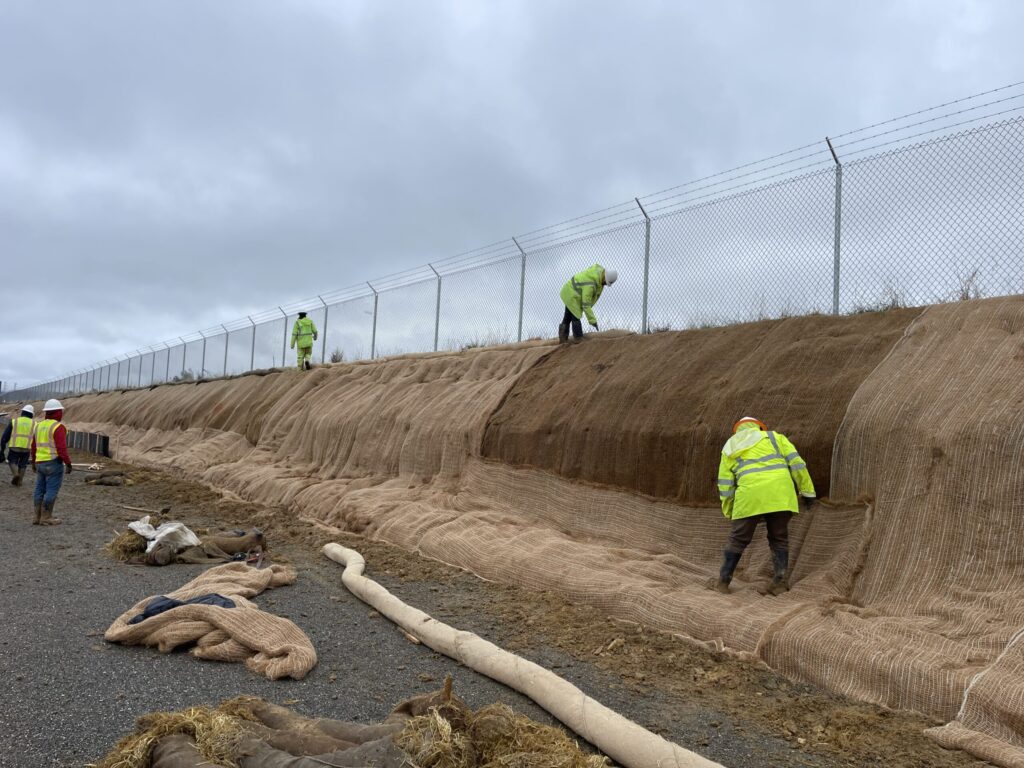Soil erosion may seem like a distant problem, but if you’ve ever walked past a construction site after heavy rain, you’ve seen it firsthand, muddy runoff carrying away topsoil, polluting nearby streams, and leaving behind unstable ground. Poorly managed erosion isn’t just messy; it costs communities millions in infrastructure damage, water treatment, and lost soil fertility each year.
That’s why smart erosion control measures matter, especially in urban projects that rely on safe, sustainable development. For example, when contractors implement land development services in Jacksonville, they rely on proven erosion strategies to balance growth with environmental responsibility.
This guide breaks down what erosion control measures are, how they work, and why they’re critical for builders, engineers, and communities alike.
Why Erosion Control Measures Are Essential
Erosion control is more than a construction site requirement, it’s a safeguard for communities, ecosystems, and investments. By managing how soil interacts with water, slope, and wind, developers and planners can prevent costly damage and ensure compliance with environmental regulations. Below are the core lessons every builder, engineer, or property owner should keep in mind:
- Erosion control measures reduce soil loss, water pollution, and infrastructure damage. Unmanaged soil erosion leads to sediment clogging rivers, damaging roads, and undermining building foundations. Effective measures help preserve stability and reduce maintenance costs.
- Common methods include vegetation, silt fences, mulching, terracing, and retaining walls. Each method addresses a different challenge. Vegetation stabilizes soil naturally, while engineered solutions like riprap and retaining walls provide long-term structural reinforcement.
- Construction projects without erosion planning risk legal penalties and higher costs. Regulatory bodies, such as the U.S. Environmental Protection Agency (EPA), enforce strict stormwater and sediment control requirements. Non-compliance can result in fines, project delays, or revoked permits.
- Long-term erosion control protects both the environment and property value. Stabilized land reduces flooding risks, improves soil fertility, and ensures properties remain valuable over time. Erosion prevention often increases resale value for residential and commercial developments.
- Effective strategies combine temporary site controls with permanent stabilization. Short-term solutions, like silt fences or erosion blankets, work during active construction, but lasting protection comes from permanent vegetation, engineered barriers, and proper drainage planning.
This balance between temporary and permanent measures is what turns erosion control into an investment, not just an obligation.
What Are Erosion Control Measures?
Erosion control measures are techniques designed to prevent or slow the movement of soil caused by water, wind, or human activity. At their core, these methods aim to:
- Protect soil structure.
- Reduce sediment runoff into waterways.
- Maintain stable surfaces for roads, buildings, and utilities.
They range from simple, low-cost options like planting grass to engineered systems like geotextiles and retaining walls.
Why They Matter
Uncontrolled erosion has cascading effects:
- Environmental impact: Sediment-laden runoff clogs streams, reduces water quality, and harms aquatic ecosystems.
- Economic costs: Infrastructure repairs and dredging can cost cities billions. The U.S. Environmental Protection Agency (EPA) estimated in 2024 that sediment pollution accounts for nearly $16 billion annually in environmental and property damages.
- Public safety: Eroded slopes and weakened foundations can cause landslides or structural instability.
For developers, ignoring erosion control can also mean violations of state and federal regulations.
Step-by-Step: How to Implement Erosion Control Measures
- Site Assessment – Analyze soil type, slope, drainage, and climate.
- Select Measures – Choose a mix of temporary and permanent solutions.
- Install Controls Before Construction – Silt fences, check dams, or erosion blankets should be in place before ground disturbance.
- Maintain During Construction – Inspect after storms, repair damaged controls, and clear sediment buildup.
- Transition to Permanent Stabilization – Once the site is built, add vegetation, retaining walls, or riprap to prevent long-term erosion.
These examples show how erosion measures adapt to scale and context.
Tools & Checklists for Erosion Control
- Geotextile Fabrics – Reinforce soil while allowing water to drain.
- Silt Fences – Simple barriers that trap sediment.
- Mulching – Organic cover to protect exposed soil.
- Riprap – Large stones placed along slopes or shorelines.
- Erosion Control Blankets – Biodegradable mats that stabilize soil during plant growth.
Pros & Cons of Common Erosion Control Measures
| Method | Pros | Cons |
| Vegetation | Low cost, natural, improves soil | Takes time to establish |
| Silt Fences | Easy to install, cost-effective | Require frequent maintenance |
| Mulching | Protects soil, adds nutrients | Temporary; can wash away in storms |
| Riprap | Durable, strong protection | Expensive, less aesthetic |
| Retaining Walls | Long-term stability | High upfront cost, engineering required |
Common Mistakes in Erosion Control
Many projects fail because erosion prevention is treated as an afterthought rather than an essential part of the design phase. When controls are installed late or chosen hastily, soil loss and water damage become inevitable. Below are some of the most common missteps that undermine otherwise well-planned developments:
- Delaying installation until after land is disturbed. Erosion measures should be in place before the first shovel hits the ground. If controls are added only after rainfall or visible runoff, much of the damage has already been done.
- Using undersized controls that can’t handle stormwater volume. A small silt fence may be fine for a gentle slope, but on a steep site with heavy rainfall, it will collapse under pressure. Choosing the wrong scale of protection often leads to costly failures during the first storm event.
- Poor maintenance of installed controls. Even the best erosion control system fails without upkeep. Silt fences sag, geotextiles tear, and check dams clog with debris. When neglected, these tools stop functioning and give a false sense of security.
- Neglecting white space in site planning. Overcrowded construction zones leave no room for runoff channels, vegetation buffers, or access for maintenance crews. Without built-in space for erosion controls, measures are either omitted or forced into ineffective positions.
- Relying on a single method instead of layered defenses. One barrier is rarely enough. For example, a site that uses only mulching without proper drainage may still experience severe washouts during storms. Effective erosion control requires a system of overlapping protections.
- Overlooking post-construction stabilization. Many developers remove temporary barriers once the project nears completion, assuming the risk has passed. Without permanent vegetation or structural solutions, bare soil continues to erode long after construction crews leave.
Each of these mistakes highlights a simple truth: erosion control isn’t just about installation—it’s about foresight, maintenance, and integration into the overall project plan.
FAQs
1. What are the most effective erosion control measures?
A combination works best, temporary silt fences during construction, followed by vegetation or retaining walls for long-term stability.
2. Are erosion control measures required by law?
Yes. In the U.S., most construction projects over one acre must comply with the EPA’s National Pollutant Discharge Elimination System (NPDES) permit.
3. How much do erosion control measures cost?
Costs vary widely. Silt fences may cost less than $1 per foot, while engineered retaining walls can run thousands per linear foot.
4. Can erosion be stopped completely?
No. Natural erosion will always occur, but measures significantly reduce its impact.
5. Do erosion control measures work in urban settings?
Yes. Urban planners use stormwater basins, green roofs, and vegetation buffers to limit runoff in cities.
Next Steps for Builders and Communities
Adopting effective erosion control measures is less about compliance and more about responsibility. Developers should budget for erosion strategies upfront, not as a last-minute fix. Communities can encourage better practices through zoning and permitting. Property owners benefit from increased land value and reduced flooding risks.
For long-term impact, pair short-term construction controls with permanent stabilization like vegetation or retaining walls. Regular inspections and adaptive planning keep projects compliant, cost-effective, and environmentally responsible.
For property owners, the benefits are just as tangible. Homes and commercial properties in areas with strong erosion control hold their value better, face fewer flooding risks, and often enjoy healthier landscapes. These protections also foster community trust, showing that developers are willing to balance growth with sustainability.
The most effective long-term approach combines temporary construction-phase controls, such as silt fences and check dams, with permanent stabilization methods like vegetation, terracing, and retaining walls. But installation is only half the equation. Regular inspections, especially after major rain events, ensure that measures remain functional. Adaptive planning, adjusting methods as site conditions change, keeps projects compliant, cost-effective, and resilient against future climate challenges.
In short, the next steps for builders and communities lie in shifting the mindset from reactive fixes to proactive planning. By embedding erosion control into every stage of development, they can safeguard natural resources, strengthen infrastructure, and create landscapes that endure for generations.






